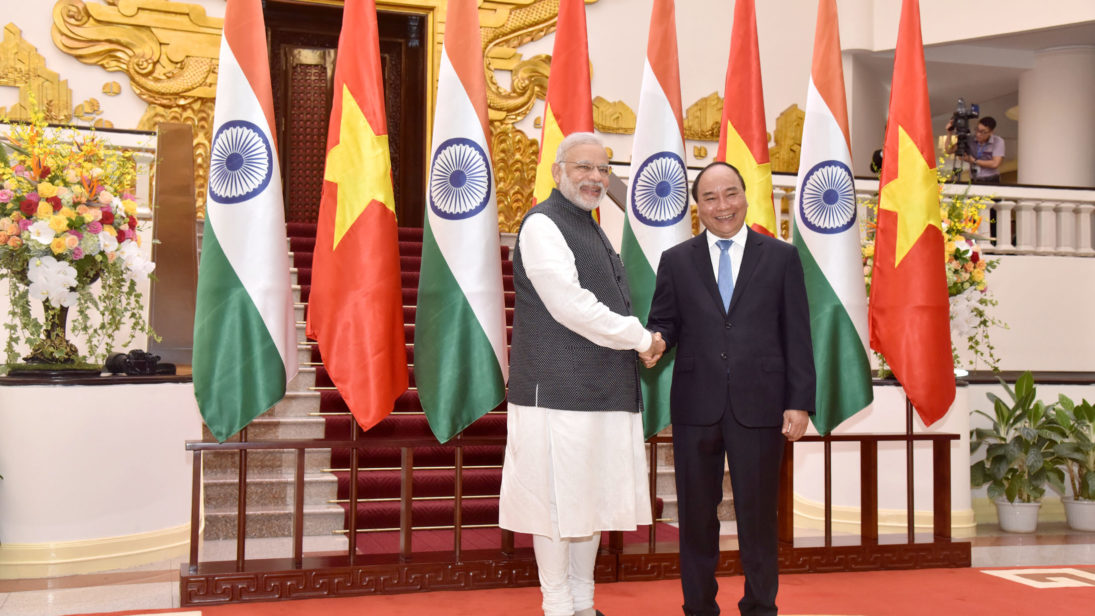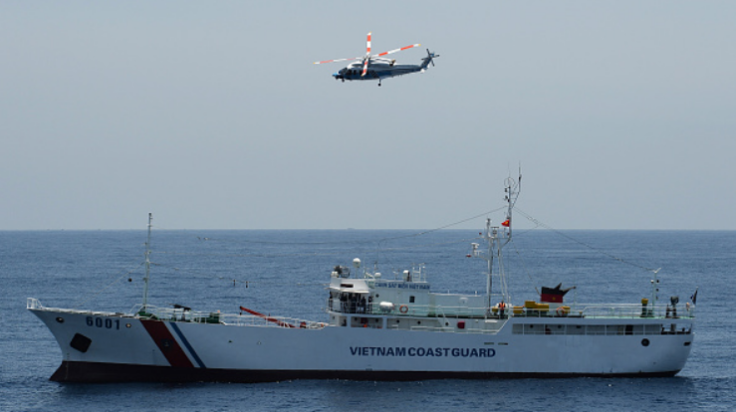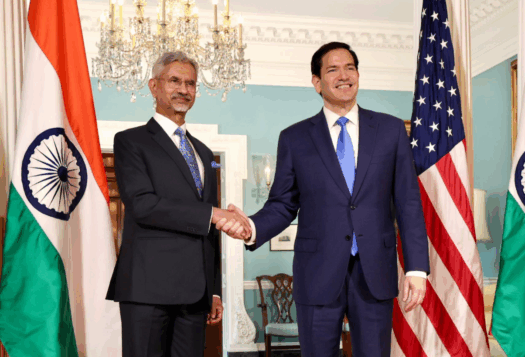
Strategic convergence in the maritime domain has allowed Vietnam and India to scale up bilateral engagement but there is still room for further cooperation as future turbulence in the region is likely. Since the 2016 upgrade of bilateral relations to a comprehensive strategic partnership, India has zealously supported Vietnam’s naval modernization. Under a USD $100 million defense credit line, India is building 12 high-speed patrol boats for Vietnam while there have also been talks on further collaboration on ship construction and surface and subsurface capacity at sea.
Naval exchange is another key area of cooperation; Indian warships frequently make port calls in Vietnam and are given access to Nha Trang Port in southern Vietnam. The Indian Navy provides substantial training and capacity-building assistance to the Vietnam People’s Navy and the two have previously agreed to conduct back-to-back naval exercises in the Indian Ocean. Last year, India sent a naval ship to deliver aid to the flood-affected areas in central Vietnam and participate in a joint passage exercise.
The China Factor
This enhanced maritime cooperation occurs amid China’s destabilizing actions which have pushed the two Cold War friends closer. Importantly, China’s use of coercive tactics in the South China Sea presents a challenge to India’s joint development of hydrocarbons with Vietnam. On numerous occasions, Beijing has opposed and obstructed India’s ONGC Videsh Ltd (OVL)’s oil exploration project in Block 128 of Vietnam’s exclusive economic zone (EEZ), which overlaps with China’s nine-dash line. Yet, for the purposes of strategic commitment (support for Vietnam’s stance in the South China Sea), India has continued its drilling activities and in 2019 OVL sought a further two-year extension.
India has also been more vocal about how it views the maritime territorial dispute between China and its neighbors. Under Modi, New Delhi has released statements supporting the 2016 South China Sea arbitral ruling which concluded that the nine-dash line was contrary to international law. India and Vietnam continue to stress the importance of the rule of law at sea, the need for a peaceful settlement, and the adoption of a consensus-based Code of Conduct (COC) for parties to the South China Sea dispute. Last year, Hanoi and New Delhi jointly called on all parties to honor the UNCLOS-mandated tribunal verdicts, which was clearly aimed at China’s disregard of the 2016 award.
While Vietnam has not explicitly endorsed the Indo-Pacific concept it has nevertheless (implicitly) signaled an intention to participate in regional mechanisms that serve its national interests.
Vietnam’s Nascent Westward Move
While Vietnam has not explicitly endorsed the Indo-Pacific concept it has nevertheless (implicitly) signaled an intention to participate in regional mechanisms that serve its national interests. At the 2018 Indian Ocean Conference hosted in Hanoi, Vietnam’s Foreign Minister Pham Binh remarked that the Indo-Pacific region is a novel, unified arena for cooperation in which Vietnam is a stakeholder. Earlier that year, Hanoi first used the term “Indo-Pacific” in a joint statement with India, which reaffirmed that the two countries would “cooperate in maintaining peace, stability and development in the Indo-Pacific region.”

Most recently, Vietnam’s 2019 defense white paper stressed that “Vietnam is ready to participate in security and defense cooperation mechanisms … including security and defense mechanisms in the Indo-Pacific region.” The participation (since 2015) of Vietnam’s Navy in the Indian-led multilateral naval exercise at the Andaman and Nicobar islands — MILAN, merely underscores this point. As an emerging middle power that increasingly relies on seaborne trade for economic growth, it is not surprising that Vietnam seeks to ensure unobstructed trade flows in the South China Sea and beyond. India should play a greater diplomatic role to back Vietnam’s efforts in protecting and advancing its maritime interests.
Moving Forward
Firstly, India needs to assume a tougher stance against China’s gray zone tactics in the South China Sea. In 2019, China dispatched a survey ship accompanied by coast guard vessels to contested waters near block 06.1 in Vietnam’s EEZ where Rosneft Vietnam BV was drilling. Vietnam briefed India on the situation, the objective of which, presumably, was to garner political support. Yet, India declined to comment. Meanwhile, the Quad nations, excluding India, namely the United States, Japan, and Australia, have jointly taken aim at China’s use of coast guard and maritime militia to disrupt oil exploration.
India should be emphatic in opposing China’s incursions into Vietnam’s waters and obstruction of its oil and gas exploration activities. Stronger statements should reassure Vietnam of India’s role in the Indo-Pacific and prompt Hanoi to tilt more toward its long-time friend. Moreover, a unified stance from the Quad on these matters would send a stern message and might ultimately curb Beijing’s behavior. Second, India should aid Vietnam in further developing infrastructure in the deep-water Cam Ranh Bay Port (Hanoi has reportedly asked New Delhi for such assistance) and, having established a network of military facilities overseas and drastically modernized its naval assets, India is certainly in a position to lend its support.
New Delhi could pursue an agreement with Hanoi for greater use of Cam Ranh Bay Port to establish a sustainable naval presence in the Western Pacific. Vietnam would be unlikely to turn down such a request, especially should India choose to contribute to the port’s refurbishment.
Serving as a refueling and repairs hub for foreign navies, the port is key to Vietnam’s increasing naval diplomacy and improved capacity would enable Vietnam to deploy its naval forces with more efficiency and to better provide logistics support for foreign vessels. New Delhi could pursue an agreement with Hanoi for greater use of Cam Ranh Bay Port to establish a sustainable naval presence in the Western Pacific. Vietnam would be unlikely to turn down such a request, especially should India choose to contribute to the port’s refurbishment.
Third, India should encourage and support Vietnam to play a proactive role in combating piracy and armed robbery, which remains a major concern for both countries. In recent years, Vietnamese commercial vessels have been attacked while traversing the Strait of Malacca and pirate ships have escaped into Vietnamese waters off the southern coast. As over 50 percent of India’s Asia-Pacific trade passes through the South China Sea, it is imperative for India to work with regional coastal states, including Vietnam, in securing vital sea lines of communication. Collaborative responses are urgent as piracy in Southeast Asia has shown signs of increase, which is likely attributed to economic hardship caused by the COVID-19 pandemic.
And finally
India’s coast guard should strengthen ties with its counterpart in Vietnam through frequent exercises and the sharing of best practices to combat piracy. While maritime cooperation between India and Vietnam has seen significant progress, there remains room for improvement. By elevating the current partnership India can secure a stronger foothold in the South China Sea and highlight its continued advocacy for freedom of navigation in the Indo-Pacific region.
Editor’s Note: A version of this piece originally appeared on 9DashLine and has been republished with permission from the editors.
***
Image 1: via Wikimedia Commons
Image 2: HOANG DINH NAM/AFP via Getty Images


